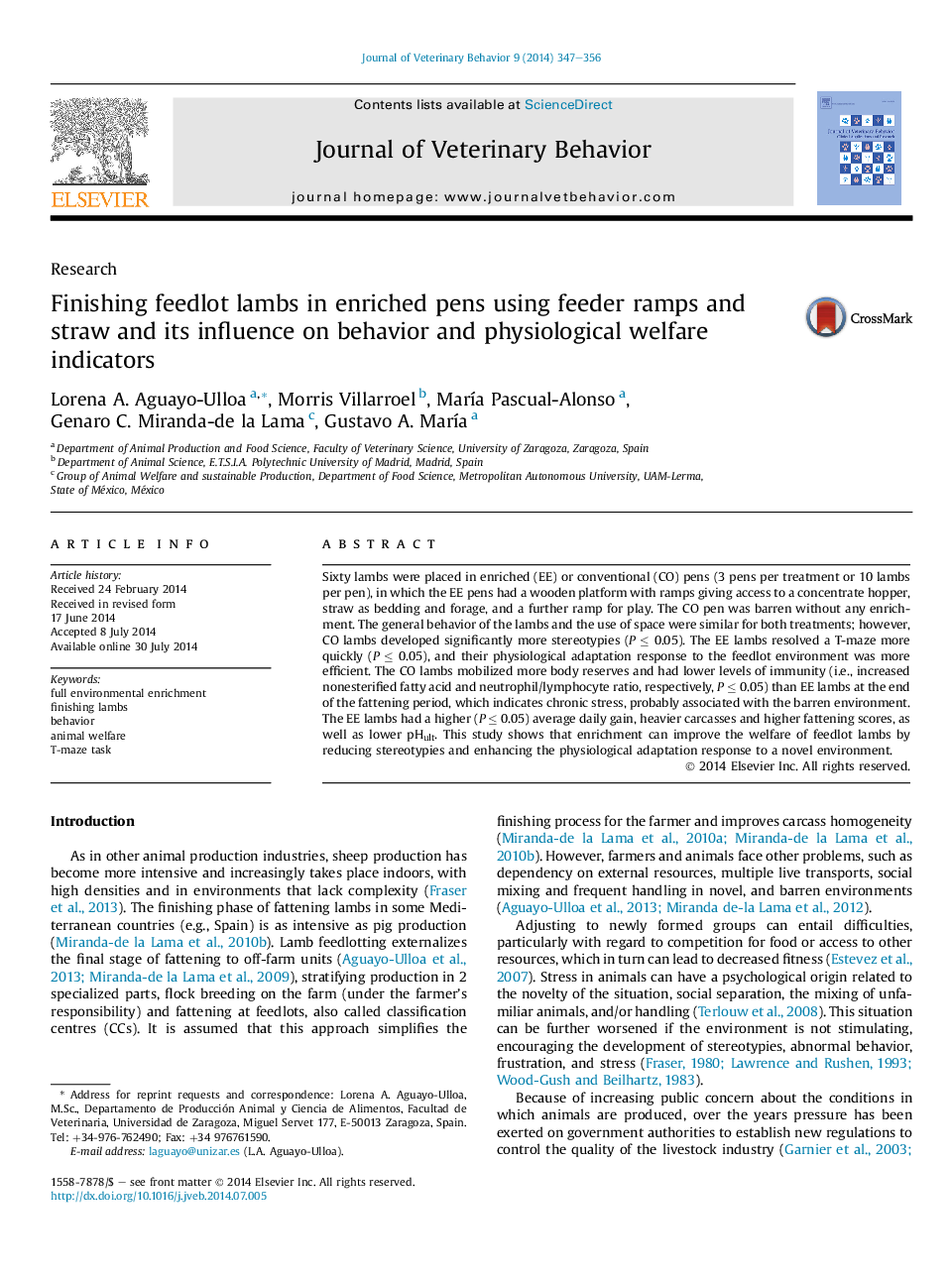| Article ID | Journal | Published Year | Pages | File Type |
|---|---|---|---|---|
| 2398721 | Journal of Veterinary Behavior: Clinical Applications and Research | 2014 | 10 Pages |
Sixty lambs were placed in enriched (EE) or conventional (CO) pens (3 pens per treatment or 10 lambs per pen), in which the EE pens had a wooden platform with ramps giving access to a concentrate hopper, straw as bedding and forage, and a further ramp for play. The CO pen was barren without any enrichment. The general behavior of the lambs and the use of space were similar for both treatments; however, CO lambs developed significantly more stereotypies (P ≤ 0.05). The EE lambs resolved a T-maze more quickly (P ≤ 0.05), and their physiological adaptation response to the feedlot environment was more efficient. The CO lambs mobilized more body reserves and had lower levels of immunity (i.e., increased nonesterified fatty acid and neutrophil/lymphocyte ratio, respectively, P ≤ 0.05) than EE lambs at the end of the fattening period, which indicates chronic stress, probably associated with the barren environment. The EE lambs had a higher (P ≤ 0.05) average daily gain, heavier carcasses and higher fattening scores, as well as lower pHult. This study shows that enrichment can improve the welfare of feedlot lambs by reducing stereotypies and enhancing the physiological adaptation response to a novel environment.
